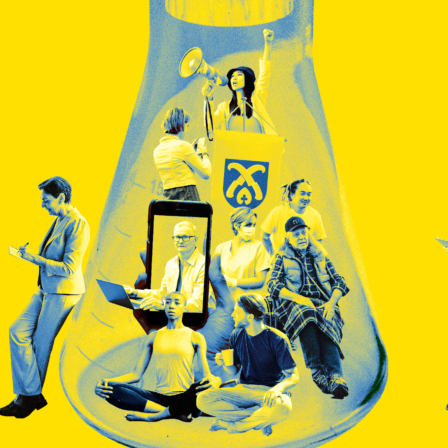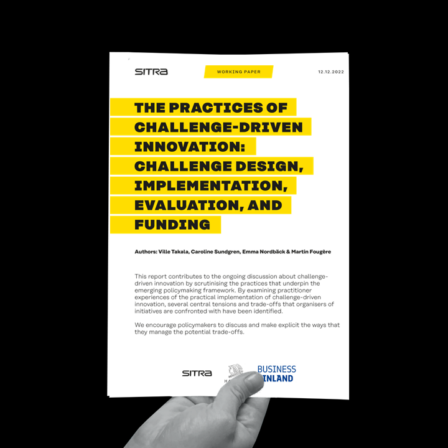Systems thinking is a new paradigm that helps us look at the interconnected nature of these issues – to see networks and dynamic change rather than static snapshots, a discipline for seeing the structures that underlie complex situations, and for identifying high from low leverage points. In this post Joss Colchester argues that it is precisely this paradigm shift in thinking that sets us on the right course to gain real traction on the most complex challenges of our time.
A Wicked World
When the fifteen-year-old Swedish climate activist Greta Thunberg recently addressed the U.N. plenary in Katowice, Poland, she had a bold message to communicate “if solutions within this system are so impossible to find, then maybe we should change the system itself.”
Greta was speaking the new language of system change without even being aware of it, a new vocabulary that helps us to understand the complex challenges societies face today as “wicked” and in response calling for innovation on a systemic level.
In this post, I want to talk about this new vocabulary and how systems thinking provides much of the conceptual tools to tackle these wicked problems in the holistic fashion required for success.
With developed economies reaching the end of the process of industrialization we have witnessed the rise of new forms of highly complex challenges that have moved to the forefront of social concerns. We increasingly find that our economies and social organizations are no longer confined to closed systems that fit nicely inside of the nation-state but instead if we look we will see that our food, our clothes, our films, our cars, our money are part of this very complex global network that now spans around the planet.
This globalized economy creates all the good things we like, but it also creates these highly complex issues such as climate change, inequality, environmental degradation, terrorism, global financial instability, multi-cultural integration or cybersecurity. The defining feature of these issues is that they are not isolated problems but they are in a sense emergent features of the very systems through which we organize ourselves today.
If we turn the clock back a hundred years or two hundred years we will see that the kind of challenges societies faced, although complicated were much simpler. The challenge of building and coordinating the railroads, of building the modern nation-state and the bureaucracy required to provide its public services effectively; we had the challenge of building skyscrapers for the first time, of flying around the world or landing someone on the moon.
Today we can do all of these things relatively easily, we can manage complicated rail networks that span the entire European continent and we can build skyscrapers virtually anywhere in the world like we are cutting out cookies. Although these problems are certainly not simple, they are different from a problem like escalating inequality and it is these complex systemic challenges that are a central part of 21st Century reality.
It is interesting to note that in many ways these wicked problems can be understood to have derived from the standardized set of solutions we developed during the Industrial Age, the combustion of fossil fuels that served us so well for centuries being a classical example. As Einstein would say “We can’t solve problems by using the same kind of thinking we used when we created them.” These wicked problems today require a new skill set and more collaborative networked systems of organization to tackle.
The terms system innovation and systems change have arisen in parallel to the idea of wicked problems as a new language is now entering the public sphere, seeing problems as “interdependent”, involving significant levels of “uncertainty” and most of all “complex”.
In the face of a growing recognition to the systemic, interconnected, interdependent and ever-evolving nature of these challenges, the term system innovation has arisen as a systems-based approach to enabling systemic transformation and sustainable solutions.
In a nutshell, I would say that systems innovation is about using systems thinking to understand and map out a complex system towards enabling transformative change. Let me go over each of these to illustrate what I mean and the importance of each.
Systems Thinking
The problem with Greta Thunberg’s call to change systems is that changing systems is not easy, they are inherently resistant to deep structural changes. Such changes can’t be achieved on a superficial level but require going back to the underlying structures, most notably the mental models that people are using which have created the system’s structure and created the boxes that people find themselves within. We need a paradigm shift in our thinking to see new solutions – this paradigm shift I would argue is systems thinking.
The reductionist form of thinking that became so dominant in the modern era has enabled us to achieve many great things but it has also created all the silos and boxes that we now find are inhibiting us from collaborating and working together in a synergistic networked fashion around these wicked problems – breaking out of these silos requires a fresh perspective.
Systems thinking is a way of thinking characterized by a holistic view of the world, which means that we are always looking at things in relation to the whole that they form part of; when looking at a plant we try to understand it in the context of the whole ecosystem; looking at a car in the context of the whole transport system. Systems thinking is about looking at the world in terms of connections; patterns of organization and how the system behavior emerges out of those networks of interactions.
Systems thinking is a paradigm or method of reasoning that focuses upon the interconnections between things and their context within the integrated whole that they are a part of. It represents an alternative to our traditional scientific method of reasoning called analysis that functions through the breaking down of complex phenomena into smaller parts. Systems thinking instead uses the method of synthesis to reason upwards from the given subject matter to understand its function within the environment it is a part of.
To illustrate this, we could take the example of designing a car. If a car manufacturing company employed us to design their next great model, we could take two different approaches to this problem, applying analytical thinking or systems thinking. If we approached the problem from a traditional perspective, we would start by analyzing the car and looking for ways to optimize it. We might come up with a design that minimizes the car’s drag by reducing its height by a few centimeters to increase its fuel efficiency.
If one was to apply systems thinking to this problem, we would start by identifying the car’s function within its environment, that is, personal transportation, and the system it is a part of, the transportation system. From this perspective, we might not even need to design a new car, but end up designing some service that connects pre-existing resources to provide the same desired functionality. From this example, we can see how systems thinking is often employed when the current paradigm or way of doing things has reached its limit and gives us a fresh perspective on things that is the source of “out of the box” thinking.
The key characteristics of systems thinking include; a focus on relations over components; divergent over convergent thinking, i.e. exploring the full space of possibility; holistic contextualization over analysis of individual properties; a focus on dynamics over a static view of the world; on open systems rather than closed.
Changing the paradigm to one that is more holistic and networked puts us on the right track for success, however, it is of course just the starting condition. Beyond this, we need a more detailed set of models for understanding this new world of complexity, this new set of models we call complexity theory which helps us to gain traction on really understanding and mapping out the workings of these complex systems that we wish to influence.
Systems Mapping
Before we can change any system it is critically important that we understand it not just on a theoretical level but also on a practical level. So often our interventions fail because we go in thinking we have a solution without actually taking the time to observe what is going on and the dynamics at play.
As Donella Meadows says “before you disturb the system in any way, watch how it behaves. Starting with the behavior of the system forces you to focus on facts not theories. It keeps you from falling too quickly into your own beliefs or misconceptions, or those of others. The system’s behavior directs one’s thoughts to dynamic, not static analysis — not only what is wrong? But also how did we get here? And where are we going to end up?”
To be successful in systems change we have to be able to in some way map out the dynamics and structures in the system that we wish to change and this is the job of systems mapping, a very practical and popular method.
Systems innovation is about changing the context within which a problem exists or shifting the conditions of the system that creates the problem thus we need systems modeling to help look at and understand the structure of the interrelationship that creates the system’s behavior.
As John Kania notes “we’re thinking about systems change not as an issue or a person that needs to be fixed… it’s the set of conditions that surround that individual. We need to work on shifting the conditions that hold the problem in place.”
Sitra’s guest blogs give a voice to the players of the future in different fields. They do not (necessarily) directly link to Sitra’s work or agenda, but are the authors’ thoughts on current issues that relate to the themes Sitra is passioned about.
Further reading
For learning about all things to do with systems thinking, complexity theory see Systems Academy
Introduction to Systems Innovation
Video course: Systems Innovation Course Intro
eBook: Systems Innovation. An Overview.
Introduction to Systems thinking
Video course: Systems Thinking: Course Introduction
eBook: Systems + Thinking. An Overview.
Audio Book: Donella Meadows – Thinking in Systems















Recommended
Have some more.